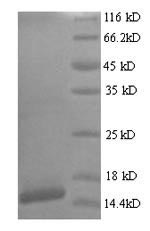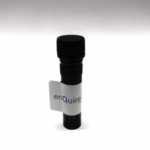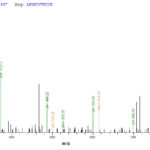Human Protein E7 Recombinant Protein Product Attributes
Product Type: Recombinant Protein
Recombinant Protein E7 based upon sequence from: Human
Host: QP7367 protein expressed in E.coli, Yeast..
Tag: His
Protein Construction: A DNA sequence encoding the Homo sapiens (Human) Protein E7, was expressed in the hosts and tags indicated. Please select your host/tag option, above.
Application Notes: Please contact us for application specific information for QP7367.
Bioactivity Data: Untested
Full Length? Full Length
Expression Region: Met1 – Gln105
Amino Acid Sequence: MHGPKATLQD IVLHLEPQNE IPVDLLCHEQ LSDSEEENDE IDGVNHQHLP ARRAEPQRHT MLCMCCKCEA RIKLVVESSA DDLRAFQQLF LNTLSFVCPW CASQQ
Purity: Greater than 90% as determined by SDS-PAGE.
Reconstitution Instructions:
Concentration of Human Protein E7 Protein:
Endotoxin Levels: Not determined.
Buffer: Tris-based buffer, 50% glycerol
Storage Conditions: Store at -20C to -80C.
| Recombinant Human Protein E7 Protein General Information | |
|---|---|
| Curated Database and Bioinformatic Data | |
| Gene Symbol | E7 |
| UniProt ID(s) | P06788 |
| General Description of Recombinant Human Protein E7 Protein. | |
| E7 protein has both transforming and trans-activating activities. Disrupts the function of host retinoblastoma protein RB1/pRb, which is a key regulator of the cell cycle. Induces the disassbly of the E2F1 transcription factors from RB1, with subsequent transcriptional activation of E2F1-regulated S-phase genes. Inactivation of the ability of RB1 to arrest the cell cycle is critical for cellular transformation, uncontrolled cellular growth and proliferation induced by viral infection. Stimulation of progression from G1 to S phase allows the virus to efficiently use the cellular DNA replicating machinery to achieve viral genome replication. Interferes with histone deacetylation mediated by HDAC1 and HDAC2, leading to activation of transcription . | |
Limitations and Performance Guarantee
This is a life science research product (for Research Use Only). This product is guaranteed to work for a period of two years when stored at -70C or colder, and one year when aliquoted and stored at -20C.






There are no reviews yet.